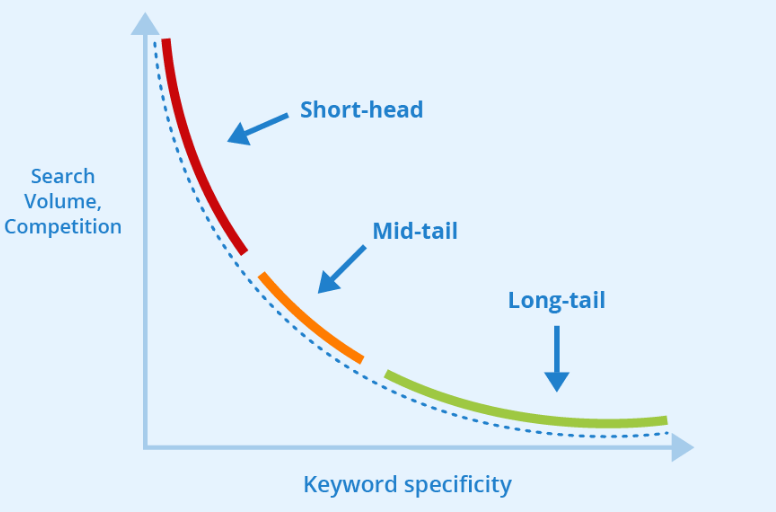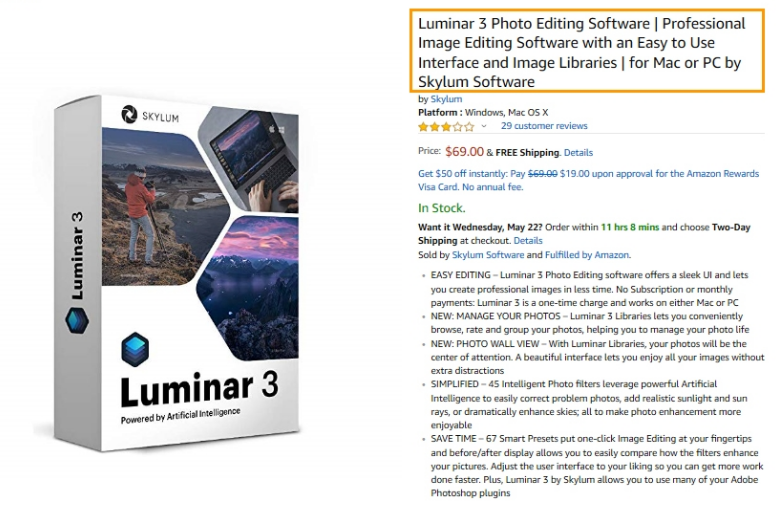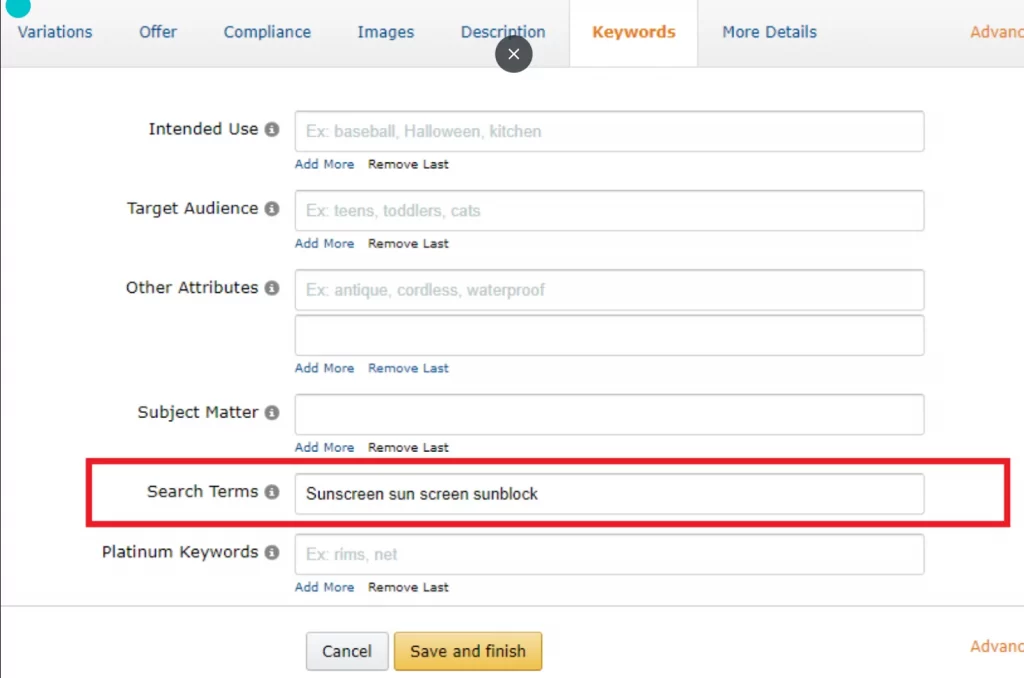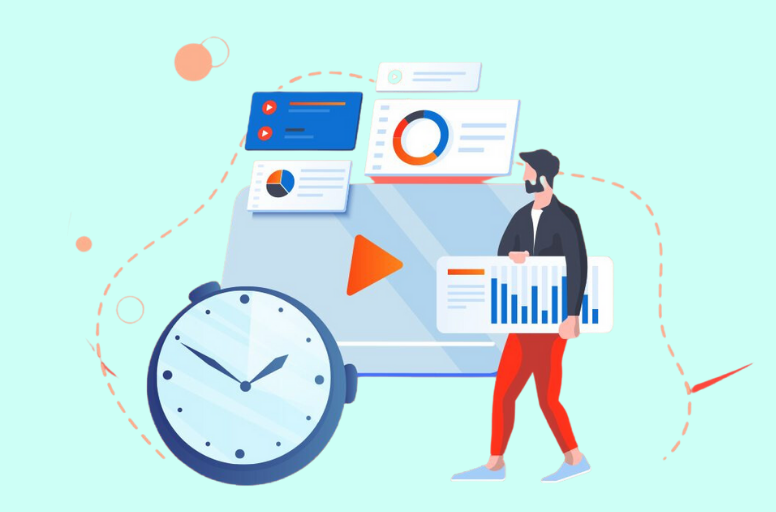Welcome to the comprehensive Amazon SEO guide! In the ever-growing digital marketplace, mastering the art of Amazon listing optimization, one of the best marketplaces, is crucial for success. With millions of products viking for attention, understanding the intricacies of Amazon’s search algorithm and implementing effective strategies can significantly enhance your visibility and drive sales.
This guide will delve into the key elements of an Amazon SEO strategy. Whether you’re a seasoned seller or just starting out, this guide will equip you with the knowledge and tactics needed to navigate the competitive landscape and boost your rankings on Amazon. We will go through the following sections in this article:
- How to optimize product titles and descriptions for Amazon SEO
- How to improve product images and videos
- How to drive traffic and sales to improve Amazon SEO ranking
Let’s get started!
Understanding Amazon SEO Ranking Algorithm
Before diving into anything about the Amazon SEO guide, the first thing you need to understand is what Amazon SEO is. Put, SEO in Amazon, also known as Amazon search engine optimization, refers to the practice of optimizing product listings on Amazon to improve their visibility and rankings within the platform’s search results. It involves employing various strategies and techniques to enhance the chances of a product appearing higher in Amazon’s search engine results pages (SERPs) when users search for relevant keywords or phrases. Optimizing Amazon Listings is a must-have step in our guide on how to increase sales on Amazon.
There are 3 factors that have the greatest influence on the Algorithm of SEO for Amazon, including:
Factors influencing Amazon’s search algorithm
1. Relevance
Relevance is a crucial factor in search algorithms, greatly affecting listing optimization on Amazon. Amazon’s search algorithm is designed to provide customers with the most relevant search results based on their search query. The algorithm takes into account various factors that contribute to a product’s relevance, such as the product title, description, and customer reviews. The more relevant a product is to a customer’s search query, the higher it is likely to rank in search results.
2. Performance metrics
Performance metrics play a crucial role in Amazon search engine optimization. Various metrics have an impact on Amazon’s search algorithm, with customer reviews and ratings being one of the key metrics. Amazon prioritizes customer satisfaction, making product reviews a significant factor in determining rankings. The algorithm considers the quantity and quality of reviews to evaluate a product’s relevance and ranking.
In addition, conversion rate (CVR) is another important metric that is often mentioned in the Amazon SEO guide. CVR refers to the percentage of customers who complete a purchase after visiting an Amazon product detail page.
3. Sales history
Sales history holds significant importance in the success of Amazon marketplace SEO. The reason behind this lies in the fact that past sales can serve as a reliable indicator of future sales performance. When algorithms evaluate the sales history of a product, they take into account the number of units sold, customer feedback, and the frequency of purchases over a specific period. Based on this data, products with a strong sales history are given preferential treatment, resulting in increased visibility and prominence in search results.

There are several actions you can take to enhance the sales history. Initially, providing discounts and promotions can incentivize customers to make a purchase, thereby positively impacting your sales history. Additionally, crafting a robust marketing campaign that generates interest in your product can also contribute to improving your sales history.
Keyword research for Amazon SEO
1. Relevant keywords
In Amazon SEO, relevant keywords play a crucial role as they enhance the visibility and discoverability of products on the Amazon platform. To effectively optimize Amazon listings through relevant keywords, it is essential to grasp customer search behavior. By analyzing popular search terms associated (i.e. using keyword tools like Ahrefs) with your product, you can identify keywords that should be integrated into your listing. Well-crafted Amazon enhanced brand content, with relevant keywords throughout the content, strengthens your product’s relevance to specific search queries. This, in turn, can improve your ranking in Amazon’s search results, making your product more discoverable to potential customers.
Furthermore, pondering how customers would search for your product without recalling your brand or product name is vital. Paying attention to the language and usage scenarios presented on your packaging can also guide your keyword selection process.
You also should consider how customers would describe the uses and benefits of your product in order to refine your keyword choices further. For example, if you sell books on Amazon, think about the genre, plot, author, and any unique features or themes that set it apart. Consider keywords such as “mystery book,” “best-selling thriller,” “author name,” or “engaging plot.”

By incorporating these strategies, you can generate a list of relevant keywords for your Amazon SEO best practices.
2. Tools for keyword research
When it comes to keyword research before SEO on Amazon, there are various tools available to aid in the process. Amazon itself provides valuable resources such as Amazon Auto-Suggest and the Sponsored Products Ad Console. The Auto-Suggest feature generates keyword suggestions based on real-time search data, allowing you to discover relevant terms that customers are actively using. Additionally, the Sponsored Products Ad Console offers insights into keyword performance metrics, assisting you in optimizing your advertising campaigns.
Apart from Amazon’s own tools, there are best amazon keyword research tools like Jungle Scout, Helium 10, and MerchantWords. These tools provide more advanced keyword research capabilities, offering comprehensive data on search volume, competition levels, and related keywords.
3. Long-tail keywords
When it comes to Amazon keyword optimization, long-tail keywords cannot be ignored. Long-tail keywords are a specific group of keywords that hold great importance for buyers looking for particular products. These keyword phrases are commonly used by customers who are closer to making a purchase decision. For example, instead of just targeting “running shoes,” a long-tail keyword could be “best men’s running shoes for marathon training.” On Amazon, targeting long-tail keywords can prove highly advantageous. One key benefit is the reduced competition associated with these keywords.
Because long-tail keywords are relevant to a narrower range of products, there is less competition among sellers. This makes it easier to achieve higher organic rankings and secure better positions in the search results.
Furthermore, customers searching with long-tail keywords often have a strong intent to purchase, making them highly qualified leads. When a customer visits your listing after using a long-tail keyword, there is a significant chance they will buy your product. This increased conversion rate not only boosts your sales but also improves your organic Amazon SEO ranking, leading to further visibility and success.

Full Amazon SEO Guide in 2023 Sellers Should Know
How to Optimize Product Titles and Descriptions for Amazon SEO
1. Product title optimization
The product title, or product name, plays a crucial role in catching a shopper’s attention within a brief moment on best-selling platforms like Amazon. Amazon search engines use the title to assess the relevance of a detail page during customer searches. To increase the chances of a customer clicking on your title, there are several important considerations to keep in mind in this Amazon SEO guide.
- Ensure that your product title matches the physical packaging of your product for consistency and customer trust.
- Keep the title length between 60 and 80 characters to maintain readability and prevent customer disinterest.
- Avoid using all capital letters and capitalize the first letter of each word, excluding prepositions, conjunctions, or articles.
- Begin the title with the product’s brand name and accurately fill in the brand name field.
- Use numerals instead of spelled-out numbers (e.g., “2” instead of “two”) and avoid non-language ASCII characters.
- Include necessary information in the title without subjective commentary like “Hot Item” or “Best Seller.”
- Use punctuation when necessary (e.g., hyphens, forward slashes, commas, ampersands, periods).
- Abbreviate measurements using standard abbreviations such as “cm,” “oz,” “in,” and “kg.”.
By following these guidelines, you can do your Amazon product title optimization to enhance their visibility, catch shoppers’ attention, and improve their performance in search results on Amazon.

2. Bullet points and product descriptions
This is a part you shouldn’t miss in this Amazon SEO guide. When creating product descriptions, it is essential to provide detailed information about product features and usage to assist customers in finding, evaluating, and purchasing products. Additionally, you can utilize the product description to highlight specific details that may not be mentioned elsewhere in the listing.
To craft high-quality product descriptions, we suggest you make the most of the power of bullet points. They can enhance readability by presenting information in concise and easily digestible chunks. They draw attention to key features, specifications, and benefits, highlighting what makes your product unique. Furthermore, their seemingly appealing format also creates white space, contributing to an organized and pleasing layout. This scannable content allows users to skim through information efficiently, aiding in their decision-making process.
3. Backend search terms
In the Amazon SEO guide, Search Terms are backend keywords that play a crucial role in creating engaging and readable content for product pages. Moreover, they ensure that Amazon indexes all relevant keywords for the product. While shoppers do not see these keywords directly, adding them to the “backend” of product listings enhances the discoverability of products.

To optimize your Search Terms effectively, consider the following tips:
- Only include generic words that are relevant to your product. Avoid using specific brand names or product attributes in this section.
- Incorporate synonyms, abbreviations, and alternative names for your product. This helps cover a broader range of search terms and increases the chances of your product appearing in relevant searches.
- Stay within the length limit provided, which is less than 250 bytes. Minimize the use of unnecessary characters and focus on maximizing the impact of the keywords you include. It’s important to note that spaces and punctuation do not count toward the byte limit.
- Ensure that you type them in a logical order that aligns with how customers would search for your product.
- Include spelling variations if applicable, but avoid deliberately including common misspellings. Focus on providing accurate and correctly spelled keywords.
- Incorporate abbreviations and alternate names for your product to cater to different customer preferences and search variations.
- Use all lowercase letters for your Search Terms. There is no need to capitalize any words.
- Avoid using unnecessary punctuation such as hyphens (-) or colons (:).
- Separate words with spaces only. Do not use other characters or symbols to separate keywords.
- Refrain from repeating words within the Search Terms field. Focus on including a diverse set of relevant keywords instead.
- Omit stop words like “a,” “an,” “and,” “by,” “for,” “of,” “the,” “with,” and similar terms that are not essential for search purposes.
How to Improve Product Images and Videos
1. Image optimization
Among the various Amazon SEO tips, optimizing images is one tip that every seller should glance at. It is especially crucial for sellers dealing with best-selling products on Amazon, such as apparel, accessories, cosmetics and makeup, kitchen appliances, and more. Presenting multiple images showcasing different angles can sway customers towards a specific search result. Captivating product images stimulate customers’ imagination and inspire them to make a purchase.

In this Amazon SEO guide, we’ll show you some tips for optimizing images
- Image quality: Ensure that your product images are of high quality and resolution. Use a professional camera or hire a product photographer to capture clear and detailed images. Amazon recommends using images that are at least 1000 pixels on the longest side to enable zooming functionality.
- Background: Use a clean and uncluttered background for your product images. A white background is the most common choice as it helps the product stand out. Amazon has specific guidelines for background requirements, so make sure to review them and adhere to their standards. You can also use a background remover tool to effortlessly achieve a seamless and professional look for your product images.
- Multiple angles: Include multiple images showcasing different angles and perspectives of your product. This allows customers to get a better understanding of the product’s features and helps build trust. Highlight unique selling points or details that make your product stand out.
- Optimize your image filenames: By using descriptive keywords related to your product. This can help improve your product’s visibility in Amazon search results. For example, instead of “IMG1234.jpg,” use a filename like “brand-product-name.jpg”.
- Image Alt text: Amazon allows you to add alt text for your product images. Use relevant keywords and descriptive phrases in the alt text to provide more context to search engines and improve your product’s discoverability.
- Image zoom and thumbnails: Amazon offers zoom functionality on product images. Ensure your images are high-resolution and allow customers to zoom in to see the product details.
- Consistency: Maintain consistency across your product images in terms of lighting, style, and branding. This creates a cohesive look and helps establish your brand identity.
2. Video optimization
Besides images, video is also a factor that has a lot of impact on SEO for the Amazon web store.

Therefore, in this Amazon SEO guide, we would like to suggest some tips for you to optimize your videos on Amazon:
- Video length: Keep your product videos concise and focused. Amazon recommends keeping videos under 2 minutes in length to capture and maintain viewers’ attention. Highlight the key features and benefits of your product within this timeframe.
- Content and storytelling: Craft a compelling narrative for your product video. Showcase how your product solves a problem or improves the customer’s life. Demonstrate its unique features and benefits in action. Use storytelling techniques to create an emotional connection with viewers.
- Call-to-Action (CTA): Include a clear CTA at the end of your video. Encourage viewers to take the next step, such as clicking the “Add to Cart” or “Buy Now” button or visiting your product page for more information. Make the CTA prominent and easy to follow.
- Video title and description: Optimize your video title and description with relevant keywords related to your product. Craft a compelling and accurate title that entices viewers to click and watch the video.
- Video thumbnails: These thumbnails should accurately represent the content of the video and entice viewers to click and watch. Ensure the thumbnail is clear and easy to understand, even in smaller sizes.
Optimize your Amazon listing with SEO and add a high-quality video for better visibility and sales. Check our guide to learn How to Make Amazon Product Videos that Convert Sales?
How to Drive Traffic and Sales to Improve Amazon SEO Ranking
1. Product reviews and ratings
Product reviews and ratings play a crucial role in improving your SEO for Amazon products. Here are some strategies to leverage reviews and ratings to boost your Amazon SEO:
- Encourage reviews: You should politely request their feedback and provide clear instructions on how to leave a review on Amazon. You can also include a small note or insert it in the product packaging, asking for a review. Positive reviews can significantly boost your product’s visibility, increase sales, and potentially earn you the coveted Amazon Choice badge, which can dramatically increase your product’s discoverability.

Politely ask for feedback and provide clear instructions on leaving an Amazon review.
- Product inserts: Include a small card or insert in the product packaging requesting customers to leave a review. Provide clear instructions on how to leave a review and consider offering a small incentive, such as a discount on their next purchase, to encourage participation.
- Monitor and respond to reviews: Regularly monitor your product reviews and respond to both positive and negative feedback. Engage with customers by thanking them for positive reviews and addressing any concerns or issues raised in negative reviews. This demonstrates your commitment to customer satisfaction.
2. Sponsored Product Ads
Using Sponsored Product Ads can be an effective strategy to drive traffic and sales on Amazon, thereby improving your Amazon SEO ranking. Here are some tips to help you optimize your Sponsored Product Ads for better results:
- Targeting: It is very important to choose your target audience carefully. You can target specific customer demographics or geographic regions to narrow down your audience.
- Campaign structure: Organize your Sponsored Product Ad campaigns into structured ad groups. Group similar products or products targeting the same keywords together. This allows you to manage your campaigns better and track their performance.
- Bidding strategy: Set competitive bids based on keyword competitiveness, your budget, and your goals. Experiment with different bidding strategies like automatic bidding or manual bidding to find the most effective approach for your campaigns. Monitor your campaigns regularly and adjust your bids as needed to optimize performance.

- Ad copy: Write compelling and relevant ad copy that highlights the key features, benefits, and unique selling points of your products. You also consider using strong calls to action to encourage clicks and conversions. Ensure that your ad copy aligns with your product listing and provides accurate information.
- Landing page optimization: The landing page of your ads direct customers to should be optimized for conversions. Ensure the landing page is relevant to the ad and provides a seamless user experience.
- A/B testing: Experiment with different ad variations to determine what resonates best with your target audience. Test different ad headlines, images, and calls to action to find the most effective combinations. A/B testing helps you refine your ad strategy and improve overall performance.
3. External traffic generation
Directing outside visitors to your Amazon product listings can have a beneficial effect on your ranking in Amazon’s search engine optimization (SEO) and lead to higher levels of traffic and sales. Presented below are several approaches that can assist you in generating external traffic and enhancing your SEO for Amazon products
- Influencer marketing: You can collaborate with influencers in your niche to promote your products. Reach out to relevant influencers who have an engaged audience and negotiate partnerships or sponsored posts. Influencers can help drive traffic and create buzz around your products, leading to increased sales and improved SEO ranking.
- Content marketing: You can start a blog, write guest posts on relevant websites, or produce videos and tutorials. Include links to your Amazon listings within the content to drive traffic from external sources.
- Email marketing: You can send out regular newsletters, exclusive offers, or product updates to your subscribers. Moreover, it is suggested to include direct links to your Amazon products and encourage them to make a purchase.
- Affiliate marketing: Set up an affiliate program where other website owners or influencers can earn a commission for promoting your products and driving traffic to your Amazon listings. This can help expand your reach and increase external traffic from different sources.

Note that when carrying out actions to drive traffic and sales for improving Amazon SEO ranking, you need to thoroughly understand the guidelines on how to sell on Amazon and the information about Amazon fees to ensure that you avoid any unnecessary mistakes or financial losses
Amazon SEO Guide – FAQs
- How long does it take for SEO changes to impact ranking?
There is no clear consensus on the exact amount of time it takes for Amazon SEO changes to impact product ranking. However, some articles suggest that it can take several weeks to several months for changes to be reflected in product search rankings. This delay can be due to a variety of factors, such as the frequency of Amazon’s algorithm updates, the competitiveness of the product category, and the amount of search traffic for the specific keywords being targeted.
- How can I track the performance of my SEO efforts?
One way to track the performance of your Amazon SEO efforts is by using conversion rate as a Key Performance Indicator (KPI). You can also monitor click-through rates , keyword rankings, organic traffic, and sales performance. Additionally, Amazon provides built-in analytics tools such as the Amazon Sales Dashboard and the Amazon Advertising Console to track the performance of your listings.
- What are some common mistakes to avoid in Amazon SEO?
Some common mistakes to avoid in Amazon SEO include:
- Confusing Amazon SEO with Google SEO
- Picking an over-saturated niche
- Not paying attention to customer service
- Lack of effort in preparing your Amazon product listing
- Underestimate the power of faster customer service
- Not striving to improve Amazon SEO ranking
- Keyword stuffing (as keyword density is not a ranking factor on Amazon)
- Not managing inventory levels.
- How often should I update my product listings for SEO?
It is recommended to update your Amazon product listings periodically. This could mean making small adjustments to search terms on the backend or making significant changes to the content of your listings. In general, updating your product listings regularly can help keep them fresh and relevant, which may help improve their search ranking and visibility.
Conclusion
In conclusion, this comprehensive Amazon SEO guide equips sellers with the necessary knowledge and strategies to optimize their product listings on the platform effectively. By mastering the art of keyword research, understanding the importance of external traffic, and adhering to AmWith the implementation of the insights and techniques provided in this Amazon SEO guide, sellers can confidently navigate the dynamic landscape, elevate their brand’s visibility, and achieve long-term success in the highly competitive Amazon marketplace.
If you are interested in earning money through online means, then you should visit LitCommerce’s Retail Blog for more discussions related to this topic. Additionally, if you want to sell your books on numerous sales channels, LitCommerce provides various guidance to help you navigate through the overwhelming amount of information. Moreover, if you need further assistance, feel free to reach out to us for detailed advice. We are delighted to assist you!



